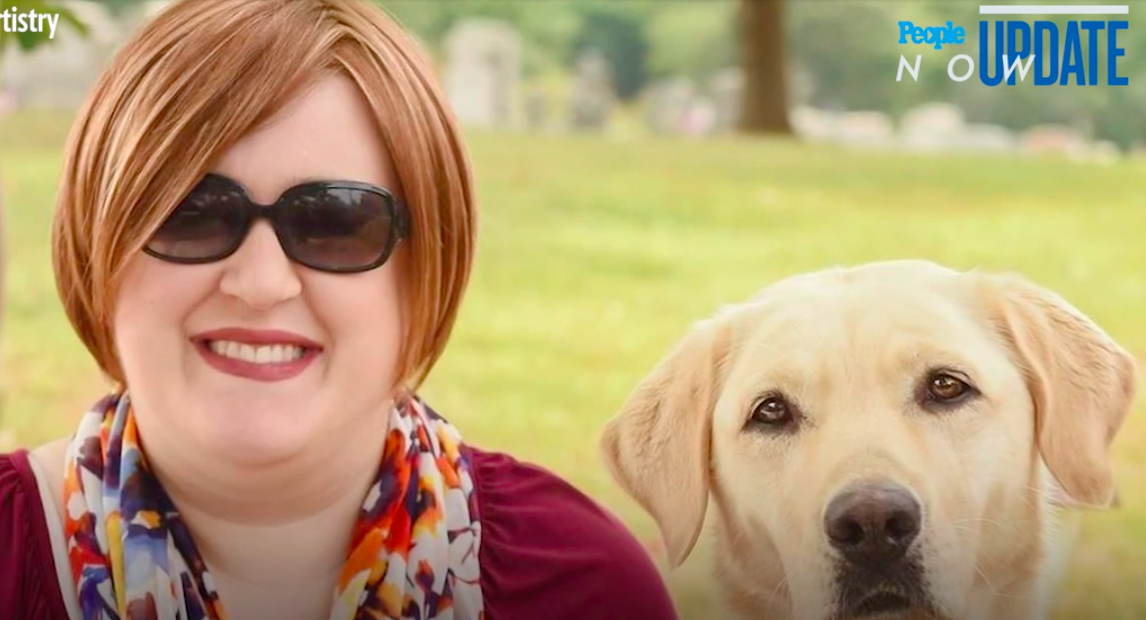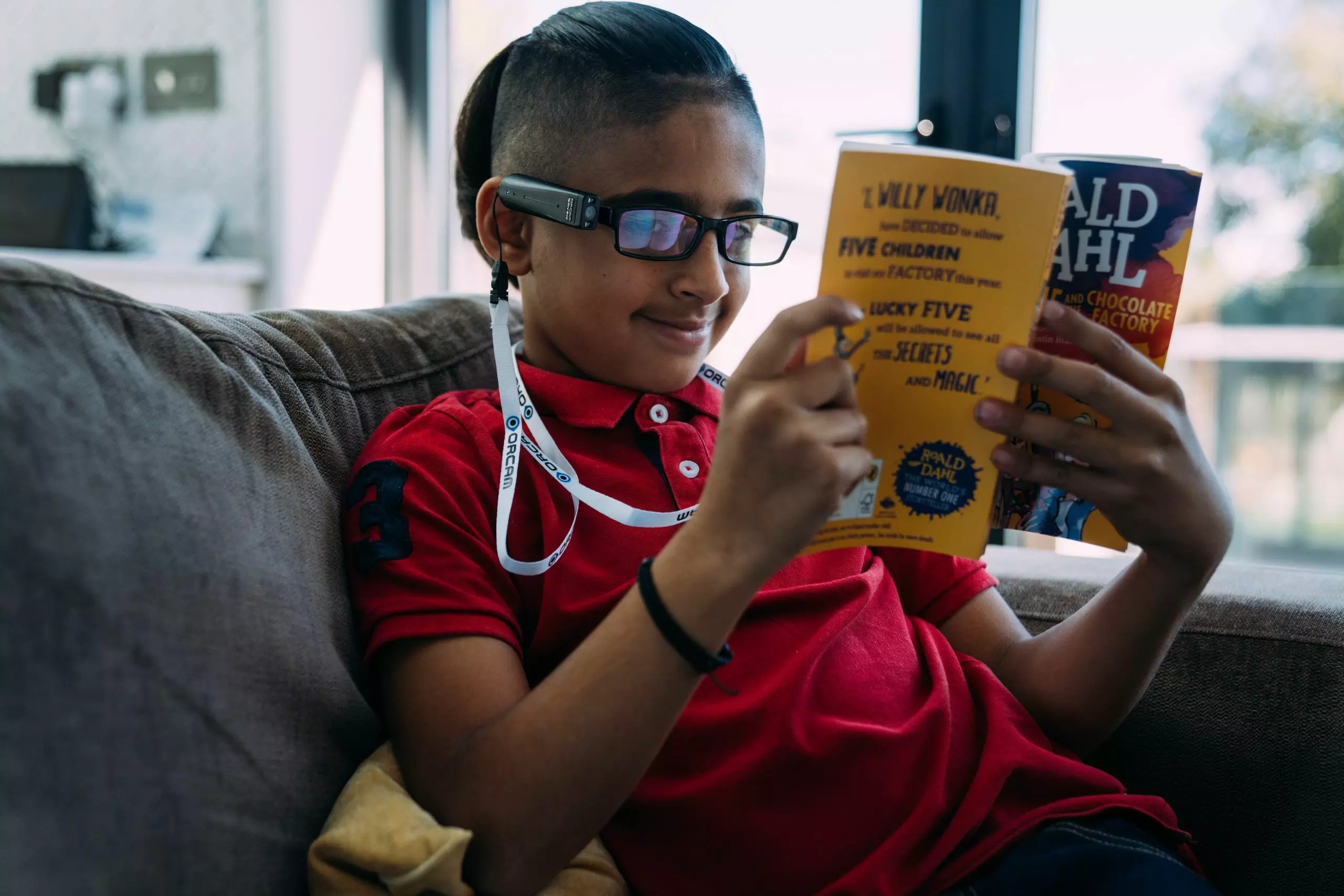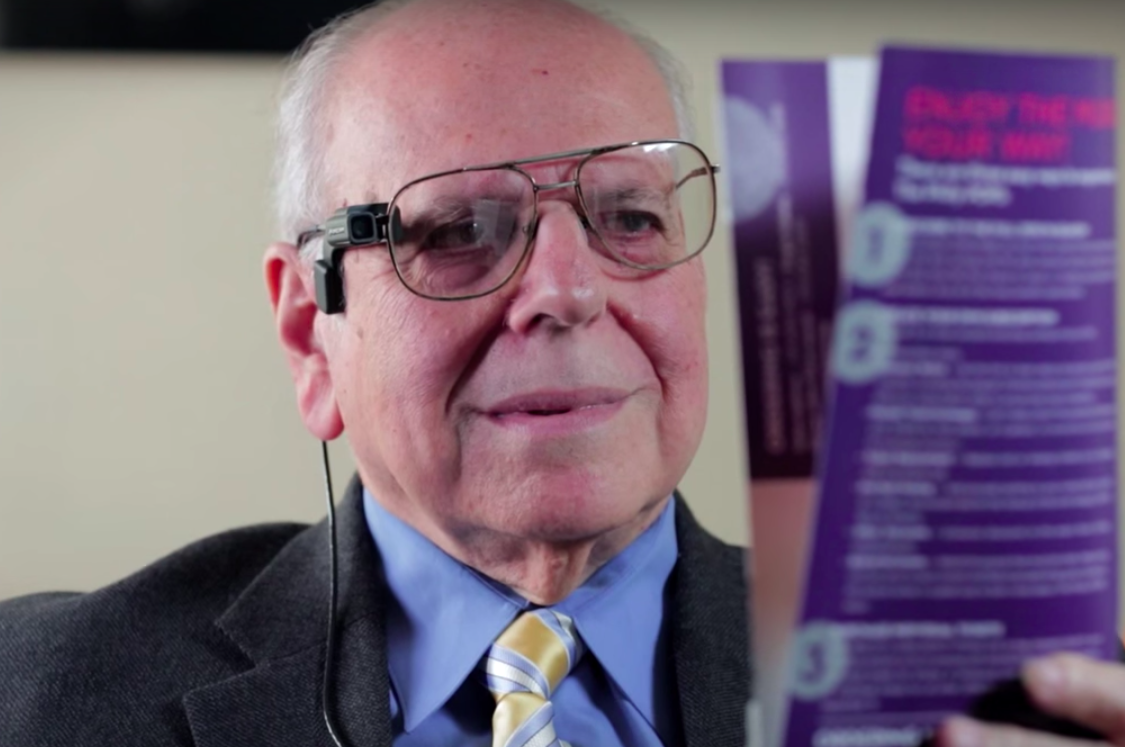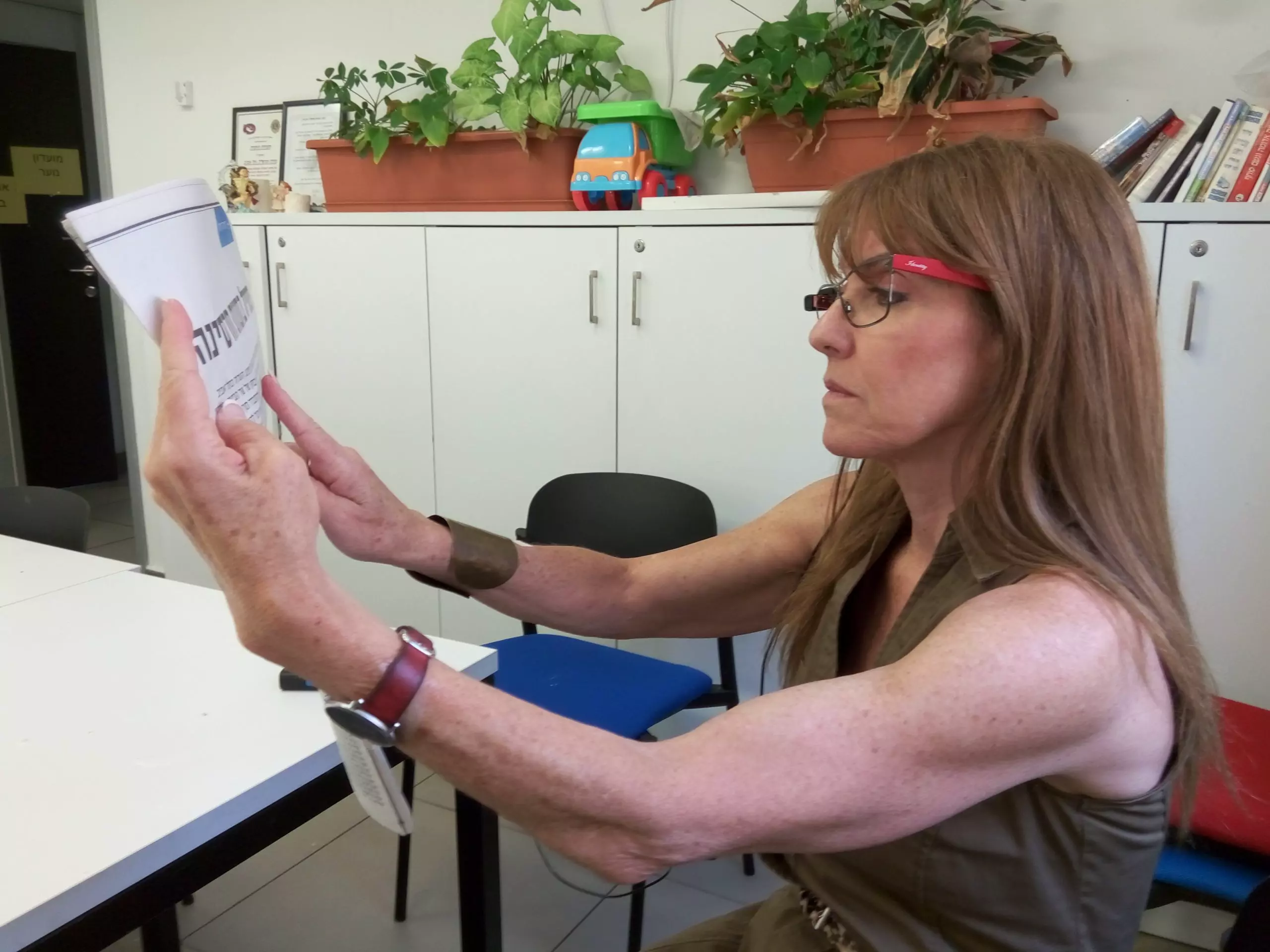Blind Accessibility: How this Blind Mother Changed Her Whole Lifestyle with OrCam (Part I)
2016-10-06 | By Orcam Staff

Guest blog by Holly Bonner
As much as I hate to admit it, there are times when I’m just a blind, cynical New Yorker. I have a problem believing the hype when it comes to anything new to the realm of blind accessibility. When I came across a YouTube video for OrCam, a fledgling Israeli technology company and creators of a wearable camera for the blind; I’ll admit, I was intrigued. Intrigued, but not convinced. I shared the video on Blind Motherhood’s Facebook page and it appeared that many of my followers also knew very little about OrCam. Their technology had an almost myth-like reputation – the evasive unicorn of assistive technology. After researching the company’s website and watching several more of their YouTube videos; I knew I had to arrange for a demo of their product to “see for myself” (as the company says). So that’s where this journey begins for this blind mother of two – in this first installment of a two-part blog dedicated to all things OrCam.
Making Contact:
I headed over to OrCam’s website in an attempt to make contact. Their site, though minimalistic in design, is filled with useful information and testimonial videos about their products and blind accessibility. I filled out a brief, online contact form that also included a short “message” area. It was in this section that I noted I was not only a blind mother of two little girls, but also a blogger who wanted to share information about the device with my readers. Within two days, OrCam responded. First, with an email from Hannah, OrCam’s Community Manager, who also happens to be in charge of the company’s own blog page. Hannah introduced herself, describing her role and explaining she had forwarded my information to the sales team who would be contacting me via phone.
That same day, I received a voicemail response from Jonas from OrCam’s sales department. Jonas and I played phone tag for a day and a half – emailing each other in between. It seemed like every time he called me I was elbow deep in changing a diaper and when I tried calling him; he was on the other line. When we finally did connect, I discovered we were talking to each other on opposite ends of the world. Literally. Here I was on the island of Staten and he was sitting in Jerusalem, Israel. Despite the distance between us, I felt an instant connection with Jonas. His kind, professional demeanor made him extremely easy to talk to – even with two toddlers screaming for breakfast in the background.
Jonas explained we needed to spend about 20 – 25 minutes on the phone. The purpose of this initial OrCam phone consult is twofold. First, it gives its sales representatives the opportunity to provide a detailed product description, explaining both its capabilities and limitations. Secondly, it allows the company to conduct a short questionnaire with each potential buyer. They respectfully review every individual’s current vision status, ensuring they have no medical complications that could impede the usage of the device.
What is OrCam & what does it actually do?
OrCam is a wearable, intuitive smart camera that attaches to the user’s glasses. The crux of this device revolves around text-to-speech technology, similar to blind accessibility programs like Zoom Text and several cell-phone apps on the market. OrCam reads, recognizes, and can even remember people and products in the user’s life. Forget your audiobooks. Goodbye, Closed Circuit Televisions (CCTVs). Adios hand-held magnifiers! OrCam helps the blind and visually impaired read newspapers, books, signs, and labels. It can also read text from a computer screen or cell phone.
I’ll admit I got a little nervous when Jonas began describing what the device actually looked like. In my mind, I was picturing Arnold Schwarzenegger in those Terminator movies. As much as I wanted to try this technology, I still wanted to look like myself – not some robotic killer badass. Needless to say, my imagination may have gotten the better of me. OrCam is comprised of a head and base unit. The camera weighs ¾ of an ounce. It fits on the right side of your glasses and the earpiece sits just along the arm of your frames. The camera has a thin wire, easily hidden behind the ear, and connects to a rechargeable battery.
The battery is approximately the size of a cell phone or small remote control. If used consistently (meaning you’re OrCamming non-stop), the battery should last 3 full hours. If used intermittently throughout the day, the device should give you 12 full hours with one charge.
Also located on the base unit are the volume control, a trigger to activate the camera’s features, and settings to change the voice from male to female. You also have the option of listening to OrCam utilizing a headphone jack or portable speaker system. I’ll admit Jonas’ description made OrCam appear extremely versatile.
Finally, Jonas explained how OrCam combines a pointing gesture with its technology. The device’s camera is activated by gesturing the end joint of your index finger toward whatever you want to read. The user then hears two beeps prompting them to remove their finger. A shutter sound occurs. This gets the user comfortable with aligning their head with the text area they want to read.
Pictured: Holly wearing the OrCam device.
Getting to the Health Portion:
Since I provided Jonas with a brief history of my vision loss and the current state of my residual vision, I was curious who exactly wouldn’t benefit from OrCam. Jonas explained because the technology is essentially a camera, people who have extreme light sensitivity would not be able to properly use the device. Cameras need light to see and being in a constant state of darkness would prevent OrCam from working to its full potential. Additionally, users with poor hearing may also find the OrCam problematic. Understandably, text to speech technology is useless if you can’t hear what the device is telling you. Finally, individuals who experience tremors or have persistent conditions such as Parkinson’s disease, may not be able to maintain the pointing gesture or necessary neck motion that work in conjunction with OrCam
The Two Types of OrCams:
OrCam has two versions of it’s technology. The “My Reader” ($2,500) only offers the text to speak option. OrCam’s “My Eye” ($3500) gives you the same text to speak technology, but also has the ability to store faces and products into its memory. Both devices come with a warranty and OrCam has financing options in the form of installments and a lease to own option. If you do choose to buy the product, the owner receives a complimentary one-on-one, two-hour training session by an OrCam certified trainer.
How I wanted to use OrCam:
In the remaining few moments in my talk with Jonas, we discussed how thought I might be able to use OrCam. I talked about my two daughters (who I love more than anything in this world) and the difficulty I sometimes have searching for their favorite books and toys. I discussed how I wanted to be able to go to the pediatrician and not have to carry a portable magnifier or CCTV to fill out paperwork. Professionally, my current position has an extreme amount of paperwork that I spend hours reading via magnifier. My hope was OrCam would provide me with a kind of technological balance amidst my role as wife, mother, social worker and blogger. Jonas seemed very confident that OrCam could work for me. He assured me he would send my information to their NYC rep, Bryan.
Within a day Bryan had emailed me and we set up an appointment to demo the OrCam in my home – complete with two active toddlers and a “Mostly Wonderful” husband who got stuck working overtime. Tune in tomorrow for Part II of my blog detailing my experience trying this blind accessibility technology first hand.
“I’ll be back.” (Sorry, I couldn’t resist.)
More Stories

OrCam's tech empowers blind 10-year-old soccer fan to find independence
2024-01-23 | By OrCam Staff

A Girl With Reading Challenges Receives A Life Changing Gift
2024-01-16 | By OrCam Staff

How OrCam Has Liberated Me: Dr. Leonard Rosenfeld's Story
2024-01-16 | By OrCam Staff

Meet Eli, OrCam's Youngest User Dealing with Childhood Blindness
2024-01-16 | By OrCam Staff

Re-Learning How to Read: How OrCam has Transformed My Vision
2024-01-10 | By OrCam Staff

Read the guest post by Hadas Bar - OrCam
2023-12-17 | By OrCam Staff



